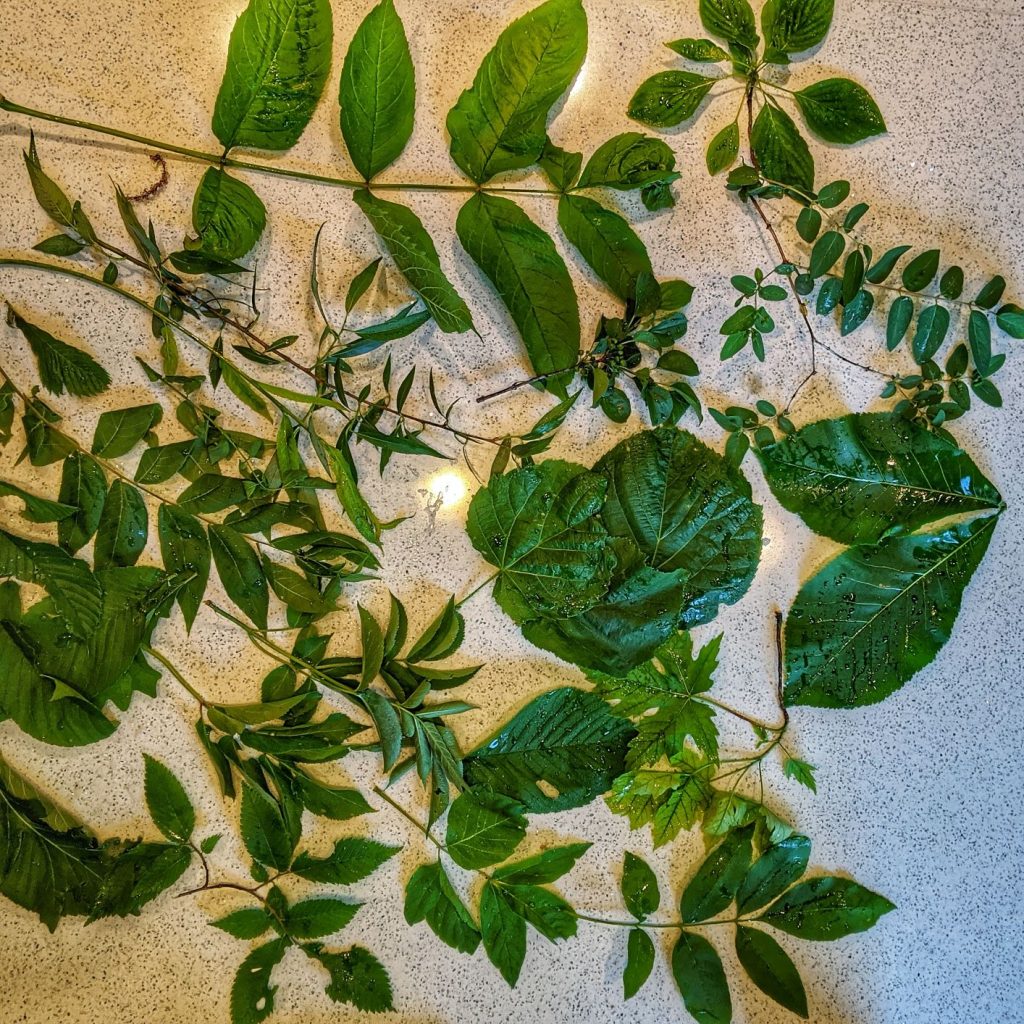I went for a walk today and decided to turn it into a sampling of all tree species in the ravine and the northern slope above. I was surprised at the number of different species, many of the sample leaves I collected as ‘duplicates’ turned out to be different species. So for the Schmidt Coulee of Wabasha, MN we have:
Natives:
- Shagbark Hickory
- Alternate-Leaf Dogwood
- Silver Maple (only near the farm, suggesting human introduction)
- Boxelder
- American Linden
- Plains Cottonwood
- Quaking Aspen
- Willow (both Black and Peachleaf Willows it appears, but too similar to be sure)
- Green Ash
- White Ash
- Black Walnut
- White Oak
- Elder
- Slippery Elm
- Rock Elm
- Smooth Sumac
Invasives:
- Eurasian Buckthorn
- Tatarian honeysuckle
- Black Locust (native to North America, but considered an invasive outside of its narrow normal range)
Anecdotal (not present on this collection, but strongly reported):
- Butternut (our neighbor reports it was once common to the valley, but most died from disease)
- American Hornbeam
- Ironwood
- Eastern Red Cedar (upper slopes outside the range of this survey)
- Red Mulberry
- River Birch
As for prevalence, the elms and ash dominate the bottom of the ravine, along with willows. Walnuts and locusts dominate the upper edges of the ravine. The northern slope has the largest collection of hickory and oak. Buckthorn is widespread but much less densely occurring than similar invasions I’ve seen. I believe the jugelone of the walnut and hickory may hinder them severely. There are, no doubt, a few other trees I missed, but these make up the majority in this location. There aren’t really any massive old trees, except for some cottonwoods, as routine logging sadly takes out the oldest trees.


We have a red mulberry along the poplar “grove” and, also, ironwood and hophornbeam are two names for the same tree..:-) MOM